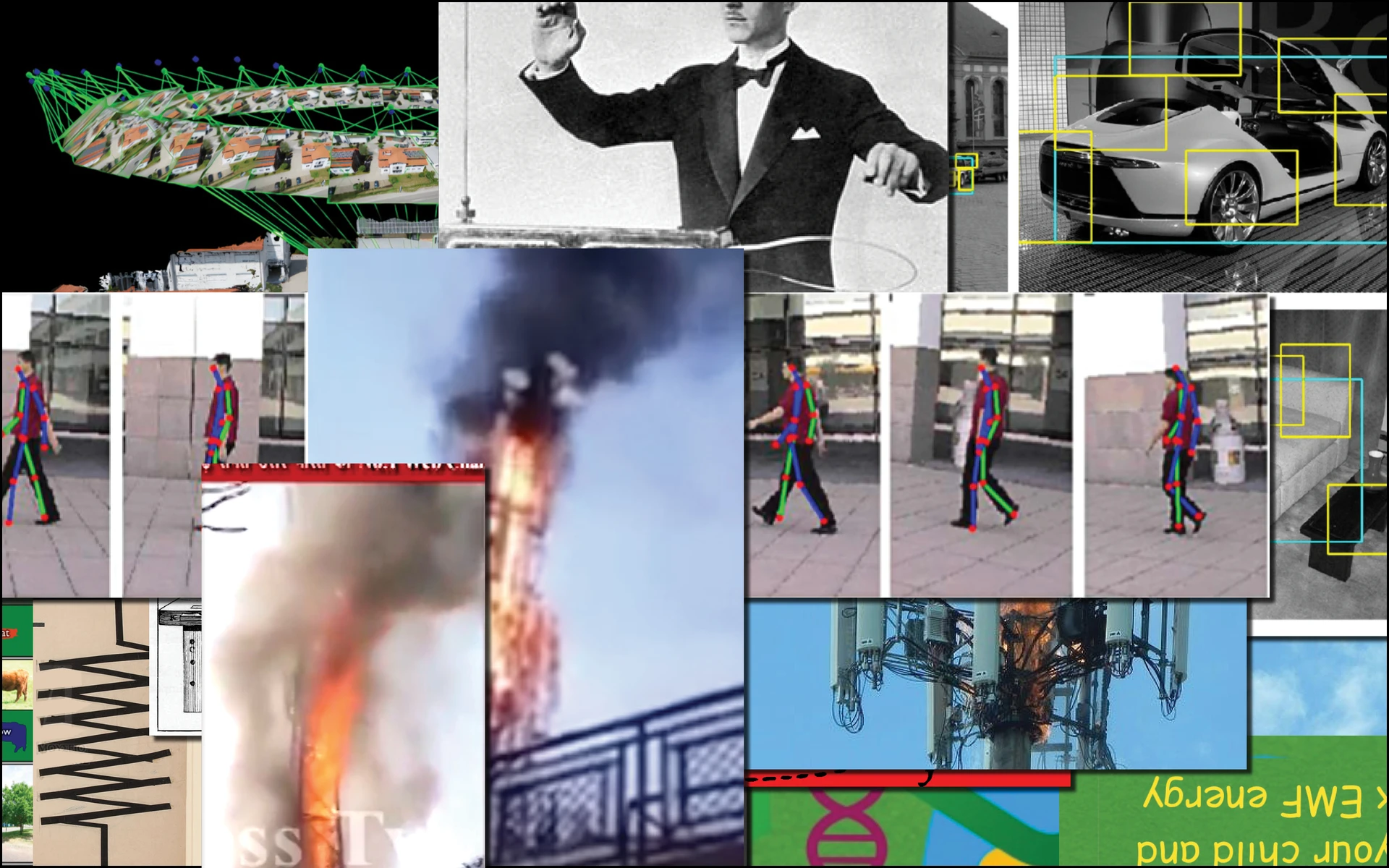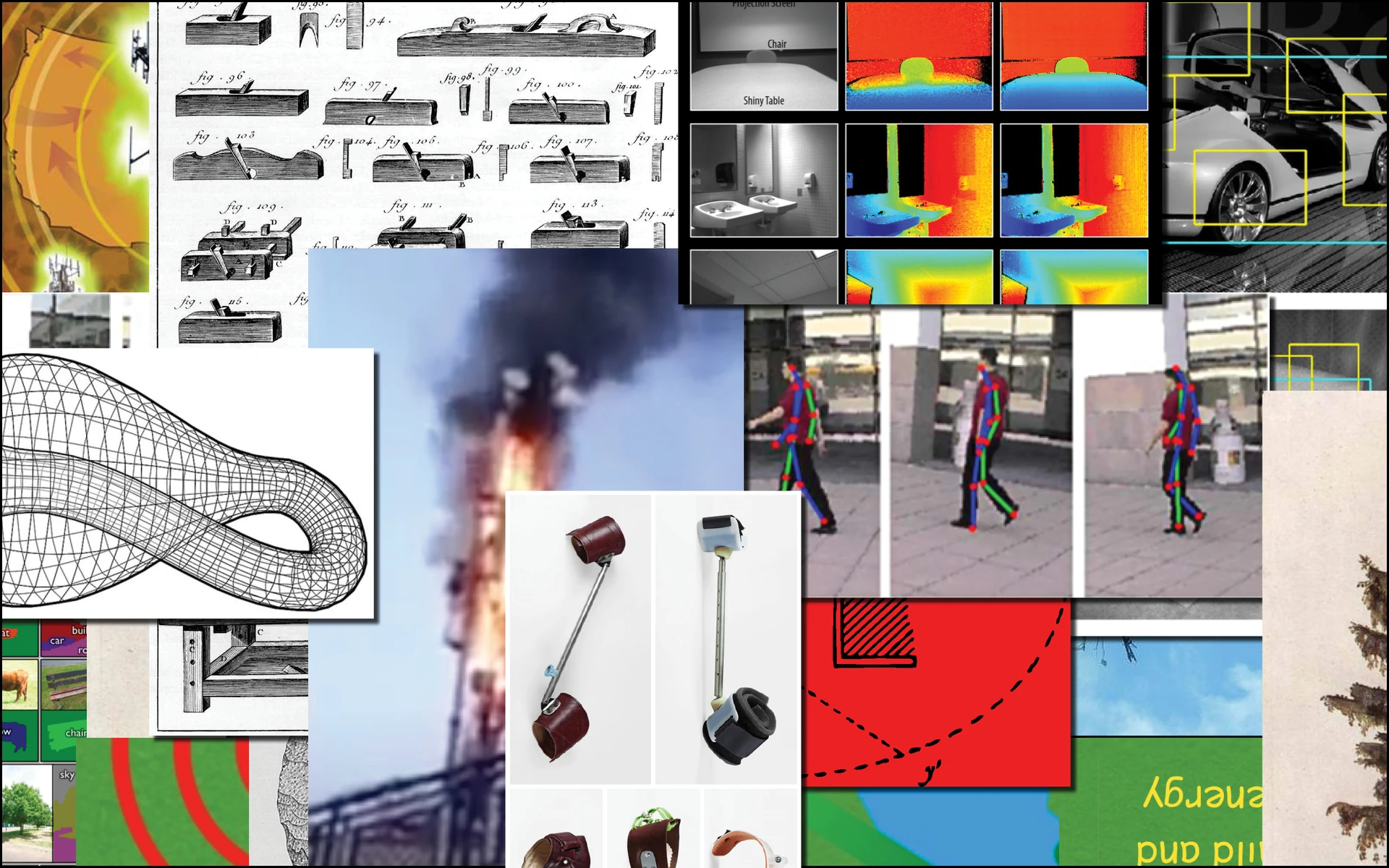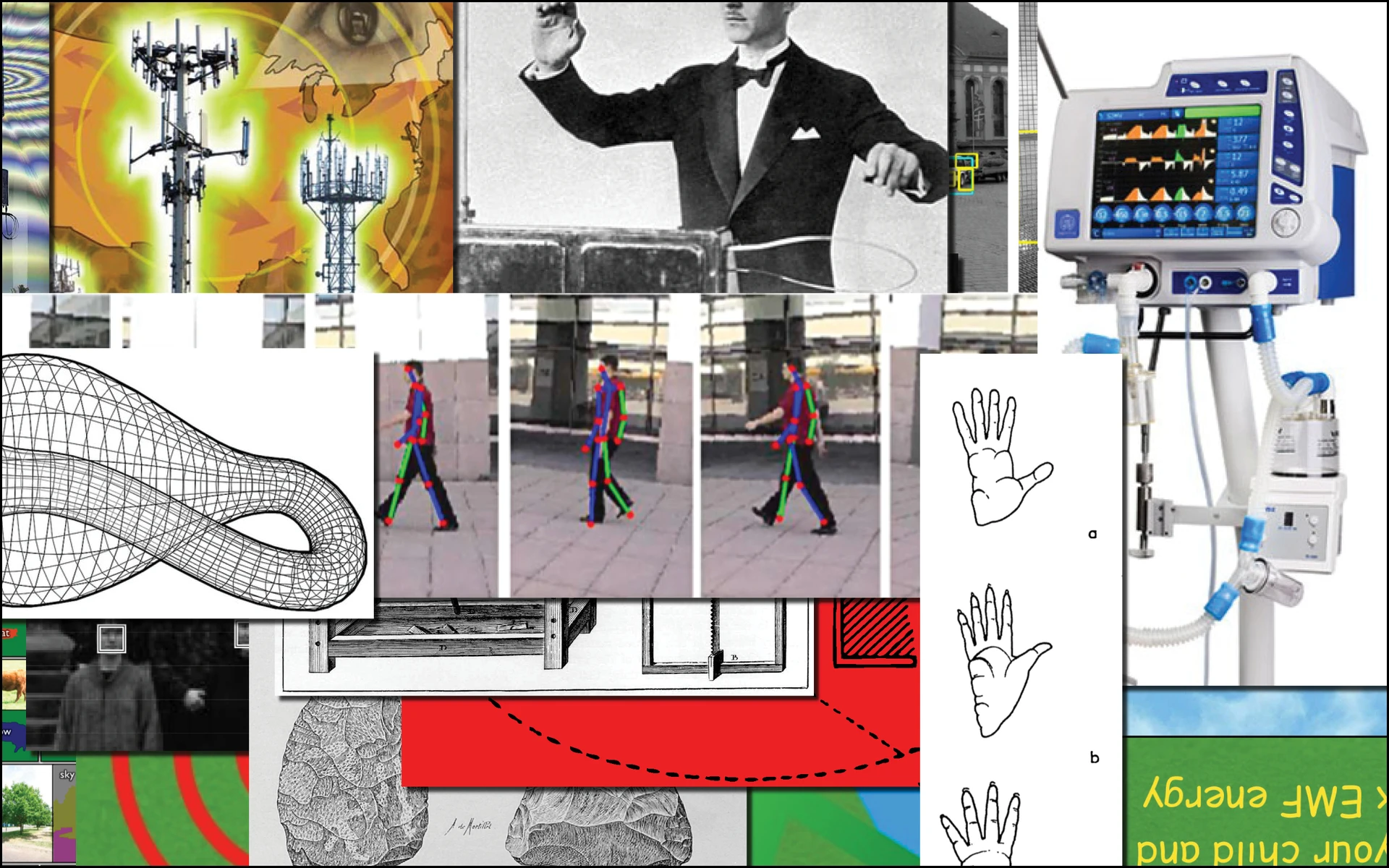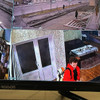Fire: AVL-5G
This essay was initially written in Russian for the special issue of “Siniy Divan” journal: The Pandemic Dictionary (2020). The issue aimed to trace the reconfiguration of familiar concepts in the course of COVID-19 pandemics. A reworked English version of the text was prepared for the HIAP Program, Helsinki.

The history of the coronavirus pandemic highlights and connects via the figure of fire two heterogeneous series of technical objects: (1) lung ventilators ‘Aventa-M’, which self-ignited as a result of a short circuit or powerline overload in COVID-19 hospitals in Russia [1], and (2) dozens of 5G telecom towers, which were set on fire by the proponents of a conspiracy theory that links 5G network operation with COVID-19 symptoms.
These two types of flaming technical objects, which differ in structure, the declared field of application, and the cause of ignition, close two divergent techno-epidemo-ideological chains. The lung ventilators and 5G towers engulfed in flames allow one to juxtapose within a single plane the conventional vision of the epidemiological process with the most radical form of its negation.
The adaptive lung ventilator, a key element of the technical ensemble of life sustainment in severe coronavirus infection, is the last anatomo-political element in the chain of the official management strategy during an epidemiological crisis. Artificial ventilation fulfills the disrupted process of oxygen and carbon dioxide circulation within a human organism in case of severe lung damage. The incidents in the hospitals join into a catastrophic union the virus damaging the lungs and the flames coming out of the technical object. Born in the technical bowels of the lung ventilator, the fire comes out decimating life and the medical institutes that sustain it. The technical object, which is tasked to compensate for the imperfection of the body that is connected to it, succumbs — as a result of its own imperfection [2] — to its connection to the electric power network. The tragic consequences of these fires embody the techno-apocalyptical phantasm of the conspiracy theory 5G-COVID-19: technology, set to be in service to a human being, is actually an instrument of their deliberate destruction.
According to official assumptions, the burning ‘Aventa-M’ ventilators end the causal chain of bleak events that go from the virus infection to the technical object emitting fire. Conversely, the reasoning behind the conspiracy theory suggests that the technical object, the 5G tower, is the starting point of the crisis. Passing, as a result of an arson attack, from the outside to the inside of the technical object, fire, known for its sterilizing effect, becomes the (pyro)technics for the fight against the spread of the disease. By destroying the 5G tower, fire stops the destructive effect of the electromagnetic waves, the genuine cause of the disease, deliberately disguised for the public. In this case, therefore, the fire is not a consequence of the imperfection of a technical object (as it is in the case of a lung ventilator) but a tool in the fight against its ominous perfection. Within the optics of the conventional logic, both inflamed technical objects are (dys)functionally alike. For a conspiracy theorist, the burning 5G tower becomes functionally akin to the conventional understanding of the functioning non-burning ventilator and vice versa: the burning ventilator becomes related to the non-burning 5G tower. One can imagine a mutant technological object, which combines the positive functional states of both devices: a ventilator connected to a burning 5G tower to sustain its combustion.
With a burning technical device, the general history of technology completes a full cycle. The becoming of technics depends on fire, its extraction, sustainment and reclamation. The gift of Prometheus, which compensates for the initial imperfection of human corporal capacities and launches the development of technology, takes possession of the melting-away results of its evolution. As Gaston Bachelard notices, the first knowledge a person acquires about fire is not the knowledge of the nature of burning but a strict taboo passed from a parent to a child, which resonates in the myth of Prometheus who was punished for breaking the will of his father Zeus. “If the child brings his hand close to the fire his father raps him over the knuckles with a ruler. Fire, then, can strike without having to burn" (Bachelard, 1964: 25). Fire is what is prohibited and what removes all prohibitions and constraints as it moves from one object to another, transforming them into an indiscrete mass.
The modern European instrumental understanding of technology sees it as an augmentation and “unaware exteriorization” (according to Ernst Kapp’s famous definition) of the initial organic ability of the body. In a lung ventilator, as such a concept implies, the paired “unaware processes” of bodily exteriorization and interiorization — breathing out and breathing in — become exteriorized, following the same respiratory route as the coronavirus infection takes.
However, the very differentiation of the external and the internal within the space of the body (and, therefore, the processes of exteriorisation and interiorization) cannot be described within the flat two-dimensional scheme. The study of the interdependent internal and external milieus of a multicellular organism’s body requires (as proposed by Gilbert Simondon) a topological analysis. First, we have to consider that the internal milieu of the body comprises the various levels of interiority (and exteriority), so that the interiority of one element — on the scale from a cell to an organ — is an external milieu of the other. However, the "topological optics" of simondonian analysis further implies that the visceral cavities of the body (to which the lungs belong) while managed and controlled by the organism, are its “external, annexed by the internal” (Simondon, 1995: 225). By the topological transformation, the internal surface of the lungs pass into the external contour of the body. Thus, the internal milieu of the lungs is not merely filled with elements of the external milieu of the whole organism but, in its essence, is the external milieu of the body, embraced by the flesh and stored at one of the levels of the body’s interiority. The organism connects the organic and inorganic (external) elements into a single topological system of permeable and interdependent milieus. The life of an organism, according to Simondon’s definition, is “self-maintenance [l’auto-entretien] of its topological condition” (Simondon, 1995: 223).
Connecting a body to a ventilator restructures and complicates the topology of the resulting assembly. Now the lungs as an external milieu, which is controlled and “annexed” by the organism, also become the internal milieu of the technical object that takes full control over it. Thus, a ventilator, which serves to regulate the exchange between the levels of exteriority and interiority of the body and helps to maintain its topological condition, redraws the contour of the topologically sustainable, and therefore livable, organism.
The infected lungs, once they get connected to a ventilator, become not just an enclave of the external milieu within one’s body, but also prove to be functionally subjected to an external technical operation. This is what typologically differentiates a lung ventilator from a prosthesis. For an inorganic object to be in a strict sense a prosthesis for an organ, it should replace the extracted (exteriorized) part of the body, yet remain under control of the organism. In the case of the lung ventilator, the spatial distribution of control (outside of the body) over the organ’s action and its form (inside of the body) inverts the principal scheme of a prosthesis. Arguably, it also questions the very metaphor of the prosthesis as a general principle behind the history of technology.

Starting from at least Freud’s image of a man as “the prosthetic God”, the specter of prosthesis follows the European thinking on technology. According to such an image, technology serves as a prosthesis to compensate for inherent corporeal lack, merging the organic and inorganic into a single functional circuit. By complementing the body with an inorganic element, the prosthetic technology imitates and augments a particular bodily capacity (along the lines of Knapp’s concept of organ-projection), and, albeit always incompletely, it compensates for its original deficit. Within this framework, technology inorganically completes the operative scheme of a body in action. Conversely, a ventilator completes its own technical action with passively ventilated lungs. A technical object, which controls an organ that is located inside the body from the outside of it, more likely uses the body as a prosthesis rather than serves as a prosthesis for the body. Any technology in its action — this holds true not only for an adaptive lung ventilator — is equally an exteriorisation (or excorporation) of an organic capacity as it is an interiorization (or incorporation) of an external technical action within the organic milieu of the body. Technology is not so much an organ being projected from the body, as it is what is projected on it.
The catastrophe of a body connected to a burning ventilator can also be traced in a spatial scheme of interiority and exteriority. Fire is exteriorised from the internal milieu of a technical object into its external milieu, passing through a chain of objects that are losing their differentiation in the flames. As it violently removes the preserved division between the technical and organic element of the overall assembly, fire destructively completes the attachment of the ventilator to the body.
The inflammation of the ventilator is contagious. Spreading across the objects, fire erases the boundaries between the internal and the external by the topologically prohibited transformations. The spread of fire out of a device that is meant to regulate and control the exchange through the permeable borders of the body’s milieus, and that has now gone out of control itself, can serve as an illustration for the conventional model of the infection dynamics. The outbreak and spread of the disease is considered an uncontrolled pathogenic exchange of elements between internal and external milieus of an organism. A burning lung ventilator reproduces on another level the very reason for its connection to a body.
On the scale of the body as well as that on the microbiological level, the conventional model of disease traces the gradual passage of the virus, an alien noncellular agent, from the external milieu of the body into the innermost organic milieu of a cell. At the end of its trajectory, the virus tresspasses the barrier of the cellular membrane and, attaching itself to the cell by a technical maneuver, takes control of the exchange processes between the internal and external milieus of the cell.
A similar process is considered to take place on the scale of a territory. The initial hotbed of infection in the history of epidemiological imagination is always considered somewhere beyond one’s own territory. An epidemic is a “French illness”, “Spanish flu” or “Wuhan virus”. Within this framework, for infection to occur on a particular territory there needs to be a primary foreign carrier of the disease who crossed the undercontrolled border and brought in the infectious agent. The infection is not only an alien body of the virus that enters an organism’s cell from the external milieu. It is equally the trace of a foreign already infected organism: the body of the carrier of the disease who found its way onto the bordered territory. Similarly, a border is imagined between separate biological species. Not only does it highlight the distinction between the virus, a noncellular agent, and a cellular organism, it also underscores the zoonotic origin of the disease. The “animal trace” is visible in the COVID-19 pandemic — presumably, within the following chain: bats — pangolins — humans. Equally, such a trace is observable in the epidemics of Ebola, swine and bird flu, AIDS and plague. The half-mythologised “zero patient”, whose cellular membrane was trespassed first by the virus, bears a mark of their “minus one” animal counter-agent, and an illegal crossing of the interspecies borders.
Within conventional framework, the strategy of managing an epidemiological crisis is realised by the temporary disciplinary measures: restrictions on the movement of elements between the borders of internal and external milieu as well as measures of control: the agile rearrangement and proliferation of the very “vacillating borders” (Balibar, 1998: 30) between the milieus. The immuno-political measures: whether compulsory vaccination or stimulation of “herd immunity”, aim not so much to prevent the intrusion of the alien matter inside the organisms — as well as that of the alien immunocompromised organisms onto the controlled territory. Rather, it aims to prevent their pathogenicity in case of an invasion. The immune dispositif of control restructures and multiplies the borders so that the external elements, which intrude the internal milieu, preserve their exteriority within it.
Conversely, the logic underscoring the conspiracy theories of the 5G-COVID-19 is grounded, as it seems, on a different non-topological and nonspatial scheme. This logic suggests an initial and irreducible openness of both the bodies to the electromagnetic waves as well as the state territories to a single but dispersed evil will. The borders that divide internal and external milieus are then not vacillating but plain out illusionary. In the same way, the loosely-personified evil, which hides behind the façade of epidemics, ignores the borders of political geography. In the guise of telecommunication companies, which implant new-generation mobile networks, there is allegedly an over- or under-state (deep state) world government, which ignores any territorial divisions. This scheme does not contrast the external and internal milieus of an organic or political body. Rather, it suggests a continuous active force of a technologically equipped evil that holds together and networks the elements of different natures.

In this case, the foundation of the 5G-COVID-19 theory can be found not in the spatial division that is, as was shown, characteristic for the “generalized logic of a lung ventilator”. Rather, it is based on the substantivized category of speed. The disease is considered an effect of the speed of connection and exchange, the limits of which are marked by the titular number of the network’s generation (3G, 4G, 5G…). For a proponent of a radical version of a conspiracy theory there is no such an entity as a virus, an otherworldly non-human, “neither alive nor dead”, as virusology suggests, agent. Rather, there is the process of merging electromagnetic waves and organisms exposed to them into a single turbulent flux. Dromology as a science of speed denies topology. Differences and borders between and within the bodies, the viruses and the electromagnetic radiation are eliminated in the high-speed self-destructive flow of constant exchange. Therefore, the 5G-COVID-19 theory claims not so much the non-effectiveness of the official motto “stay home” but rather its “irrelevance”. The conspiracy idea of infection originates from the fundamental impossibility of a “home”, as well as of any other types of demarcated, bordered and confined places. According to the theorist of speed Paul Virilio, “the strategic value of the non-place of speed has definitely supplanted that of place” (Virilio, 2006: 149). There is neither a home, nor a non-home as a vast indifferent external. In this techno-magic phantasm everything permeates everywhere in the flow of connection and synthesis. The conventional understanding of the virus as an autonomous fragment of microbiological communication permeates into the realm of smooth and high-speed data exchange of the 5G network.
Similarly, the 5G-COVID-19 theory easily connects to the various ultra-conservative beliefs, as well as health and environment concerns. The theory reconciles events into a single causal network, imposing the chronology of telecommunication technology developments onto the succession of 20th-century epidemics, and intertwines the energetic, political, religious, and economic perceptions into a single eschatological knot.
In “Theses Against Occultism” Theodor Adorno defines such conspiracy schemes as the signs of “hidden gravitation of the society towards total catastrophe” (Adorno, 2001: 175), which its proponents hope, in vain, not only to foresee but also to survive. “Panic breaks once again, after millennia of enlightenment, over a humanity whose control of nature as control of men far exceeds in horror anything men ever had to fear from nature” (Adorno, 2001: 172).
The exposure of the hidden global mechanics of conspiracy theories, a gesture akin to the conspiracy’s own unveiling of fallacious appearances, leaves, however, unresolved the very visible, practical layer of the theory. In the case of the 5G-COVID-19 theory it is a seemingly random choice of its two key elements — a technical device as a target object for an attack and fire as its instrument. Drawing upon Adorno’s argument, one may not only reduce the general assumptions of the theory to a kernel that succumbs to a rational critique but, contrarily, further unfold within its own logic the imagination that fosters the conspiracy.
The contentious relationship of the arsonist with technology, including telecommunication, cannot be reduced to technophobia or neo-luddism. Indeed, the proponents of the 5G-COVID-19 theory actively use the latest means of communication in order to spread their knowledge about the nature of infection as well as to coordinate and promote the arsons. As Adorno’s argument suggests, the arsonists’ action could be considered an attack on the technological object qua instrument of control. If the catastrophe towards which the society of arsonists gravitates is Adorno’s total catastrophe of universal control, then, in a world defined by speed, the control in question is not one over nature, but over the acceleration of speed. Then, the initial suspicion of the conspiracy theory might consider the infection an effect of the network’s speed limitation rather than steady increase. Indeed, not only does the 5G network provide a connection speed exceeding that of previous generations, it also sets its upper limits. By destroying a 5G tower and cutting themselves off from the network, the arsonist possibly does not aim to revert to the speed limits of the 4G network but, on the contrary, paves the way for its uncontrolled acceleration. The destruction of a telecommunication technological object only disrupts the network in order to raise the connection and exchange speed at the next round. The burning 5G tower removes the final constraints that cannot be overcome by a self-ignited ventilator. Similarly to the image of the planetary “igneous youth” from the “Cosmology of the Spirit'' by Evald Ilyenkov, the fire of a burning 5G tower points towards that “fiery-vaporous condition in which all elements are transformed into wildly rotating vortices and where it is fundamentally impossible to preserve any artificially created borders at all, from behind which humans could hide, no arbitrarily durable and heat-resistant “husk, ” capable of separating an artificial environment from that which remains, from the “non-humanized” world, evidently turns out to be that absolute border beyond which the existence of thinking matter is already impossible” (Ilyenkov, 2017: 176).
Bibliography
Adorno, T. W. (2001) The stars down to earth and other essays on the irrational in culture. London: Routledge.
Balibar, E. (1998) The Borders of Europe / Cosmopolitics, Thinking and Feeling Beyond the Nation // Eds. P. Cheah and B. Robbins. London and Minneapolis: University of Minnesota.
Bachelard, G. (1964) Psychoanalysis of Fire. London: Routledge & Kegan Paul.
Ilyenkov, E. (2017) Cosmology of the Spirit. trans. Giuliano Vivaldi, Stasis 5, no. 2: 164–190.
Simondon, G. (1995) L’Individu et sa genèse physico-biologique. Grenoble: Millon.
Virilio, P. (2006) Speed and Politics. Los Angeles: Semiotext (e).
